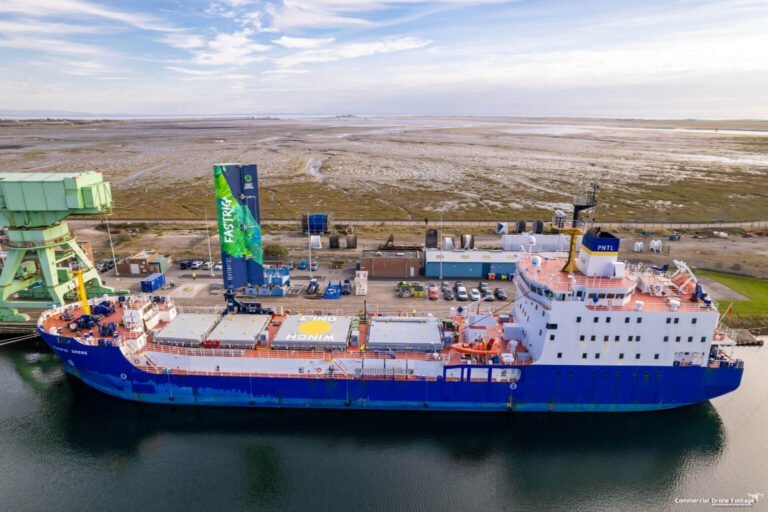Nuclear Transport Solutions (NTS) has become a trailblazer in the maritime industry by implementing innovative sail technology that significantly reduces environmental impact.
The UK-based firm has installed the Smart Green Shipping’s FastRig wing sail on the Pacific Grebe, a specialized vessel designed for the secure transport of nuclear materials.

This marks a noteworthy milestone, making NTS the first nuclear transport operator to trial such technology on its ships.
The initiative is part of a collaborative effort with Smart Green Shipping (SGS) to explore new ways of cutting fuel consumption and greenhouse gas emissions—an area where the shipping industry has traditionally struggled.
SGS’s FastRig technology, a retractable wing sail system, is designed to retrofit onto existing vessels like cargo ships and tankers.
The FastRig technology is more than meets the eye.
These sophisticated sails are made from recyclable materials and can autonomously adjust to changing weather conditions, optimizing fuel efficiency.
The system integrates with FastRoute, SGS’s proprietary software that uses artificial intelligence and high-performance computing to select the most efficient wind-assisted routes.
This technology has the potential to reduce a vessel’s fuel consumption and CO2 emissions by up to 30%.
One of FastRig’s major advantages is its straightforward installation, requiring minimal deck space and no additional crew, making it an attractive option for various ship types.
Furthermore, SGS offers a “wind-as-a-service” model, including lease-financed FastRigs and comprehensive operational support, which aims to make this technology accessible and economically viable for the shipping industry.
The Pacific Grebe has left its home port in Barrow-in-Furness to conduct sea trials this month.
These trials will provide valuable performance data to complement digital models and testing results developed in collaboration with the University of Southampton.
The data is crucial for validating the expected benefits of the FastRig system, such as reducing operational costs and enhancing sustainability in maritime shipping.
According to Diane Gilpin, CEO of SGS, the real-world application of the FastRig system on the Pacific Grebe offers a unique opportunity to gather accurate, independently verified performance data.
Such information is indispensable in assessing how digital models align with real-world results, potentially paving the way for broader adoption of this promising technology.
This pioneering project not only reflects NTS’s dedication to reducing its carbon footprint but also aligns with its goals of maintaining high standards of safety and security in nuclear transport.
As part of the UK’s Nuclear Decommissioning Authority, NTS is responsible for cleaning up the UK’s nuclear legacy, demonstrating its commitment to sustainable practices.
The FastRig wing sail technology represents an exciting development in the drive for greener shipping solutions.
With the promising results expected from these sea trials, SGS and NTS are hopeful that more sectors within the shipping industry will adopt similar strategies to address the pressing need for reduced emissions.
